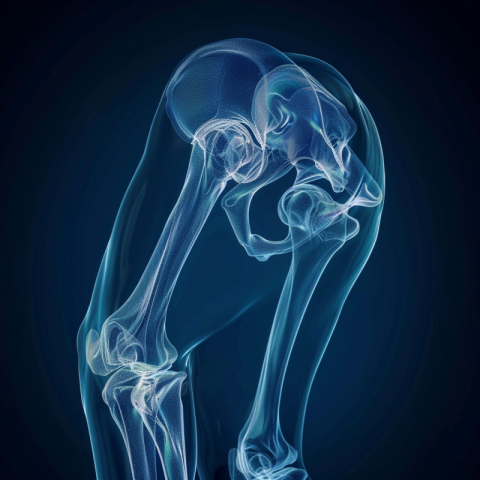











Body Pain: Understanding the Causes, Types, and Management Strategies
Body pain, also known as myalgia when referring to muscle pain, is a common experience that can range from a mild annoyance to a debilitating condition. It can affect any part of the body and can be caused by a wide range of factors, including injury, overuse, inflammation, medical conditions, and even stress. Understanding the different types of body pain, their potential causes, and effective management strategies is crucial for maintaining overall health and well-being.
1. Types of Body Pain: A Spectrum of Sensations
Body pain can be categorized in several ways, including by its location, duration, and underlying cause:
- By Location:
- Musculoskeletal Pain: Pain affecting the muscles, bones, ligaments, tendons, and joints. This is the most common type. Examples include back pain, neck pain, shoulder pain, knee pain.
- Neuropathic Pain: Pain caused by damage to or dysfunction of the nervous system. Often described as burning, shooting, or tingling. Examples include sciatica, carpal tunnel syndrome, and diabetic neuropathy.
- Visceral Pain: Pain originating from the internal organs. Often described as a deep, aching, or cramping pain. Examples include stomach pain, menstrual cramps, and chest pain.
- Headache: Pain in the head, which can be classified into various types, such as tension headaches, migraines, and cluster headaches.
- By Duration:
- Acute Pain: Pain that comes on suddenly and typically lasts for a short period (less than 3-6 months). It often results from an injury or a specific event.
- Chronic Pain: Pain that persists for a longer period (more than 3-6 months) and may be constant or intermittent. It can be more challenging to treat and may be associated with underlying medical conditions.
- By Cause (Mechanism):
- Nociceptive Pain: Caused by the activation of nociceptors, which are specialized nerve endings that detect potentially harmful stimuli, such as heat, pressure, or chemicals. This type of pain is often described as sharp, aching, or throbbing.
- Inflammatory Pain: Caused by inflammation, which is the body's response to injury or infection. This type of pain is often associated with redness, swelling, and warmth.
2. Common Causes of Body Pain: From Injury to Illness
Body pain can result from a multitude of factors:
- Injury: Fractures, sprains, strains, bruises, cuts, and other injuries can cause acute pain.
- Overuse: Repetitive motions or strenuous activity can lead to muscle soreness, tendonitis, and other overuse injuries.
- Inflammation: Conditions like arthritis, bursitis, and tendinitis involve inflammation of the joints, bursae, or tendons, respectively.
- Infection: Viral or bacterial infections can cause muscle aches, joint pain, and headaches.
- Medical Conditions: Various medical conditions, such as fibromyalgia, chronic fatigue syndrome, multiple sclerosis, and cancer, can cause chronic pain.
- Nerve Damage: Conditions like neuropathy, pinched nerves, and sciatica can cause neuropathic pain.
- Stress and Tension: Psychological stress can manifest as physical pain, particularly headaches, neck pain, and back pain.
- Poor Posture: Maintaining poor posture for extended periods can strain muscles and lead to pain.
- Degenerative Conditions: Conditions such as osteoarthritis involve the breakdown of cartilage in joints.
3. Diagnosing Body Pain: Finding the Root Cause
Determining the cause of body pain often involves:
- Medical History: The doctor will ask about the location, duration, intensity, and characteristics of the pain, as well as any other symptoms and relevant medical history.
- Physical Examination: The doctor may examine the affected area, assess range of motion, and check for tenderness, swelling, or other abnormalities.
- Imaging Tests: X-rays, CT scans, MRI scans, or ultrasound may be used to visualize bones, joints, muscles, and other tissues.
- Nerve Conduction Studies: These can help determine any nerve damage.
- Laboratory Tests: Blood tests or other laboratory tests may be ordered to rule out infection, inflammation, or other underlying medical conditions.
4. Managing Body Pain: A Multifaceted Approach
Treatment for body pain depends on the underlying cause, the type of pain, and its severity:
- Rest: Avoiding activities that aggravate the pain and allowing the affected area to rest.
- Ice or Heat Therapy: Applying ice packs or heating pads to the affected area can help reduce pain and inflammation.
- Over-the-Counter Pain Relievers: Nonsteroidal anti-inflammatory drugs (NSAIDs) like ibuprofen or naproxen, or acetaminophen, can help alleviate mild to moderate pain.
- Prescription Medications: For more severe pain, doctors may prescribe stronger pain relievers, muscle relaxants, or other medications.
- Physical Therapy: Exercises, stretches, and other physical therapy techniques can help improve strength, flexibility, and range of motion, and reduce pain.
- Massage Therapy: Can help relieve muscle tension and improve circulation.
- Acupuncture: An alternative medicine technique that involves inserting thin needles into specific points on the body. Some find it effective for pain management.
- Chiropractic Care: Focuses on the musculoskeletal system, particularly the spine.
- Injections: Corticosteroid injections or other types of injections may be used to reduce inflammation or block pain signals.
- Surgery: In some cases, surgery may be necessary to address the underlying cause of the pain, such as to repair a damaged joint or remove a tumor.
- Lifestyle Changes: Maintaining a healthy weight, practicing good posture, exercising regularly, and managing stress can help prevent and manage body pain.
- Cognitive Behavioral Therapy (CBT): Can be helpful for chronic pain, especially when combined with other treatments.
5. When to See a Doctor: Seeking Professional Help
It's important to see a doctor if you experience:
- Severe pain that doesn't improve with home treatment.
- Pain that is accompanied by other symptoms, such as fever, numbness, weakness, or difficulty breathing.
- Pain that interferes with your daily activities or sleep.
- Pain that is getting worse over time.
- Pain that is the result of a significant injury.
6. Preventing Body Pain: Protecting Your Body
Several strategies can help prevent body pain:
- Regular Exercise: Staying active and maintaining a healthy weight.
- Proper Lifting Techniques: Using your legs, not your back, when lifting heavy objects.
- Good Posture: Maintaining good posture while sitting, standing, and sleeping.
- Ergonomic Workspace: Setting up your workspace to minimize strain on your body.
- Stretching: Regularly stretching to improve flexibility and prevent muscle stiffness.
- Stress Management: Practicing stress-reducing techniques like meditation, yoga, or deep breathing.
- Healthy Diet: Eating a balanced diet that provides the necessary nutrients for strong bones and muscles.
Conclusion:
Body pain is a common experience that can have a significant impact on our daily lives. Understanding the different types of pain, their potential causes, and the available treatment options is essential for effective management. By taking steps to prevent pain, seeking medical attention when necessary, and adopting a healthy lifestyle, we can minimize the impact of body pain and maintain our overall well-being. Remember that pain is often a signal from our body that something is wrong, so it's important to listen to our bodies and seek appropriate care when needed.
Body pain, pain, muscle pain, joint pain, back pain, neck pain, shoulder pain, knee pain, headache, acute pain, chronic pain, pain management, pain relief, pain medication, causes of body pain, types of body pain, arthritis, fibromyalgia, neuropathy, sciatica, inflammation, injury, overuse, stress, posture, exercise, stretching, physical therapy, massage therapy, acupuncture, chiropractic care, pain clinic, pain specialist, pain management doctor, when to see a doctor for pain, pain relief at home.

